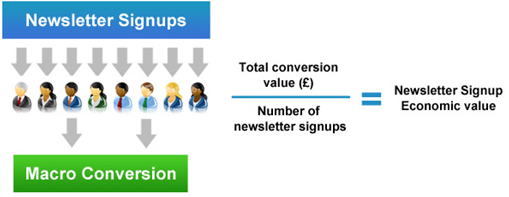We have certainly come a long way in understanding impact and effect of users who are visiting our websites. In the early days of the internet the measure of success was the amount of hits your website had received.
However this approach was fundamentally flawed in that it only provided a basic top level view providing no benefit or insight to webmasters. It was much like a manager knowing exactly how many workers he was managing, but having no idea what they were doing day to day and unable to measure the quality of their work.
Web analysts quickly honed into the need for more insightful data and soon understood the only way to improve your website was to understand exactly what users were doing. This included measuring things such as how long users spend on site/pages, what pages they visit and also bounce rates for example. The need for this data has quickly evolved into the analytics packages we see available in the present day.
Understanding conversions
Every website that is built has been created with business objectives in mind, whether this is to provide information, create leads for your company, or sell products. Measuring the amount of visitors that complete a desired action on your site is referred to in the industry as a conversion. Understanding the conversion rate (website visits / number of conversions) of your website helps you to gage the value of your website as well as the success of the numerous campaigns that are driving traffic to your site. This can be invaluable in understanding and reporting where money should be spent to gain maximum uplifts.
Most webmasters tend to only focus on the top level conversions that drive immediate revenue or leads for their company. The problem with conversion rates for these types of conversions is that this figure alone can be distorted. Due to the fact that only a minority of visitors actually come to your site and convert, this represents a limited number of outcomes on your business. There is no doubt that conversions should be measured, but as they represent a small proportion of the website traffic it means that the bigger picture can be missed. The rest of the traffic to the site who weren’t successful in converting can ultimately be where the most valuable insights can be found.
Introducing macro and micro conversions
Step forward the analysis technique of macro and micro conversions – the premise behind this approach is designed to combat the issue by only focusing on a small proportion of your traffic that is converting and allowing you to see the bigger picture.
First of all it is important to define what is meant by macro and micro conversions. A macro conversion is the primary conversion on a website, for example a completed sale on an ecommerce site or a completed lead generation form. A micro conversion relates to smaller engagements such as a newsletter sign up or a user watching a product video. Micro conversions can often precede the macro conversion.

There are conflicting definitions of macro and micro conversions within the industry. These definitions state that a macro conversion is defined as any conversion completed and a micro conversion as any steps completed leading up to a macro conversion. This definition is not incorrect and the definition is subjective in essence, but it is important to understand that a micro conversion will not always lead to a macro conversion.
Understanding that macro are not the only type of conversions to happen on your website introduces a whole new element to analysing your website data. Measuring micro conversions opens up the amount of potentially meaningful data you have at your resource meaning that more insights are likely to be found. Micro conversions as a single entity may well be smaller than a single macro conversion, however clubbing your micro conversions together with your macro conversions will be more valuable to you than a single macro conversion.
Defining macro and micro conversions
The first step to achieving a broader look at your website data is to define what macro and micro conversions are present on your website. The only way you can truly do this efficiently is to look at your website and look at the key engagements and interactions users can partake in. This could bring up a whole range of things such as a completed sale, social sharing or newsletter signups for example. You can also include engagement metrics such as users who have visited more than five pages or users who have spent more than five minutes on your site.
Once you have all of these engagements and interactions you must then define which of them are macro and which are micro. It is then essential at this point to make sure you are measuring each and every one of these conversions using goals or events. The revenue or value of your macro conversion is usually obvious and will be available in the form of revenue generated or can be easily calculated if it is a lead generation conversion.
This figure created by the macro conversions is often the only figure that webmasters will have available to them – but as mentioned this doesn’t represent the whole story. Understanding the economic value of the micro conversions you are now also measuring will increase this figure and allow you to see a more accurate view of the value your website is generating as a whole.
Applying economic value to each of your Micro conversions is the most difficult aspect of this technique and the value will totally depend on what the conversion represents to individual companies, a quick example of how this could be worked out is represented below:

Summary
Having a one-dimensional view of your website nowadays will put you at a distinct disadvantage. Software and tools such as Google Analytics, which gather copious amounts of website information are available and it is important that all webmasters understand how to get the best out of this data.
Macro and micro conversions are great methods that can be applied to see a multi-dimensional view of your website and help gather insights that will continue to grow your website and your business revenue.


